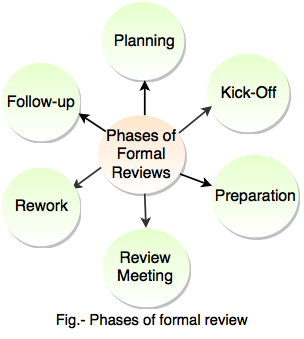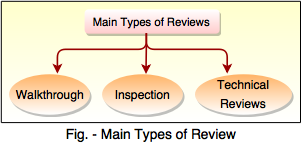| Static Testing | Dynamic Testing |
|---|
| Static testing is completed without executing the program. | Dynamic testing is completed with the execution of program. |
| This testing is executed in verification stage. | This testing is executed in validation stage. |
| Static testing is executed before the compilation. | Dynamic testing is executed after the compilation. |
| This testing prevents the defects. | This testing finds and fixes the defects. |
| The cost is less for finding the defects and fixes. | The cost is high for finding and fixing the defects. |
| It consists of Walkthrough, Inspection, reviews etc. | It consists of specification based, structure based, Experience based, unit testing, integration testing etc. |
In this chapter we are going to discuss about the static testing technique i.e Informal review, Walkthrough, Inspection, Technical Reviews. Reviews are vary from informal to formal review.
Formal reviews follow the formal process i.e these reviews are well structured and managed.
Defects and issues are identified in the preparation step that are logged page by page.
This phase handles the issues that require discussion.
Decision on the document reviews is constructed by reviewers or participants. Sometimes decision is based on formal
If the number of defects found per page is more than certain level then the document needs to be reworked.

